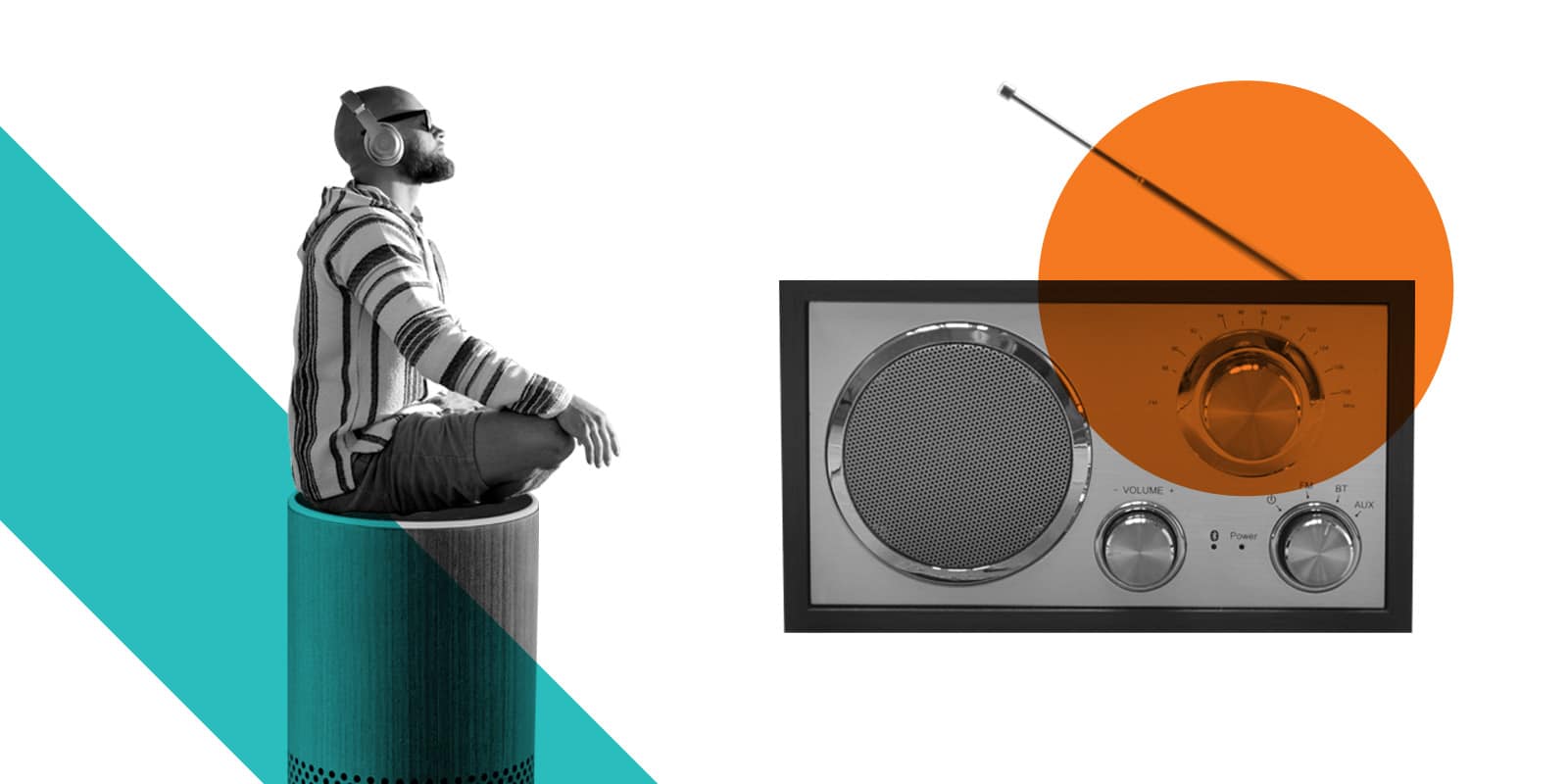Growth Trends 2023: Audio is now omnipresent, but is your approach omnichannel

By Scott Braniff, Head of Investment, Digital and Print
In a world where artificial connection via technology has become a key component of life, consumers are increasingly seeking a sense of real connection and belonging. The rise of home working and solo living has enforced this need for companionship and has coincided with consumers turning to audio as a companion medium. The way in which listeners are tuning in and engaging with audio content as a broadcast and a precision medium is becoming more nuanced and complex.
As result, there is a growth opportunity for brands that are able to implement seamless and smart audio experiences across both linear and digital channels.
- The 2022 Radiocentre Generation Audio study confirms that audio has become an important antidote and companion in a challenging world where half of working adults work from home, often alone, at least one day a week. The study confirms that 26% of adults listen to keep themselves company, which is a new need state identified for the medium, and 35% do so to lift their mood. This need state is important because it means that there is an opportunity for much deeper engagement for brands.
- 88% of the population tune into radio every week, with live radio making up 71% share of adult listening. Linear radio provides an experience that on-demand cannot. Listeners have brand affinity with stations and genres via live and shared experiences. There is a relationship with presenters in real time that brands can continue to harness, with the realisation that these connections are more important to people of all ages than ever before.
- 9 million adults in the UK listen to digital audio, and time spent with this channel stands at 1 hour 22 minutes each day. There are now 17.2 million podcast users that contribute to this listening, making up 44% of all digital audio users. 74% of podcast listeners say podcasts provide them with content they want to dedicate their attention to, and they use headphones 90% of the time. This is a leaned-in, one-to-one experience where the listener has self-selected what they want to listen to and has switched off distractions to do so. It is focused listening where people can engage with their passion points in a comforting and relaxed way.
Audio can work for listeners in diverse ways across different platforms. Despite the audio landscape being complex, listeners are embracing it and are using a range of connected audio devices to consume it. The growth in audio touchpoints available enables brands to reach audiences in a range of contexts and environments at scale. Importantly for brands, these audiences are highly engaged, and the audio experience consistently triggers a positive emotional response. Relaxation and “keeping me company” are the top two reasons listeners consume digital audio.
However, streaming services, podcasts, and digital audio, while mainstream for our listener, remain fragmented from a planning and buying perspective, creating siloes that are inefficient for media planning.
As a developing space, digital audio is experiencing various speeds of development across the market, meaning consistent targeting approaches and access to listener data are uneven in their availability and application. As users have moved from listening via web players, where cookies could be deployed, to app-based players and smart speakers, addressability has also dropped.
To counter this fragmentation and complexity, brands need to try and boost addressability. This could be through the creation of additional contextual audiences across supply partners, testing of delivery across supply where non-cookie-based targeting will scale -YouTube and Amazon- or testing of new tech for keyword targeting across podcasting and AI-read articles.
The pace of change in digital audio is exciting for everyone, and it has stepped up in terms of measurement and effectiveness. Currently, measurement exists in the siloes of the major players, with little 3rd party verification, so there is an opportunity for brands to evolve how they measure the impact of digital audio more broadly.
Audio has become an important antidote and companion in a challenging world.
The growth opportunity:
Audio is everywhere. YouTube, Amazon, premium publisher podcasts and diverse audio content are areas of new supply. More quality and diversified supply means more ways for brands to have a meaningful impact in audio. Cancer Research and Tesco are examples of brands that leverage data across this supply and make addressable creative an essential part of their digital audio activity.
Addressability in siloes is not addressability, and it risks an inconsistent brand experience. Navigating this complexity and having a single view of the market means brands can achieve more with their budgets. A holistic view of inventory, audience, context and a single creative delivery mechanism means brands can design once and distribute at scale.
The voice engagement capabilities of smart speakers – which are now in 52% of homes – also have a key part to play in helping brands identify and measure growth. Interactive audio ads, where a listener is prompted to engage with their smart speaker, now give brands a measurable outcome for campaigns.
3 things to do today…
Harness the nuanced need states of consumers across linear and digital audio planning.
This can be done by ensuring that message and tone is specific to each environment.
Use the power of live broadcast radio in combination with smart digital targeting.
Then you can create campaigns that people can experience with other listeners, but also at a one-to-one level.
Consider how addressable messaging can deliver growth through personalisation at scale.
Map out the data signals to inform how, when and what type of message you deliver to your audience.
Fill in your details below to download a full copy of the 2023 Growth Trends report.











